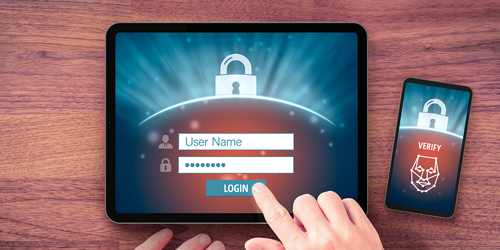
Everybody is used to the simple way of accessing a protected device or account: enter your username and password, and you’re in. However, a password is not enough anymore. Attackers can hack into devices or accounts where the user has a weak layer of protection.
To protect users against cyberattacks, companies started offering a different type of authentication: multi-factor authentication. In this article, we’re going to talk about what is multi-factor authentication, the different forms of authentication, and why you should implement MFA into your life.
What is Multi-Factor Authentication?
- Knowledge: any protected information that you, as the user, know. This is the most common type of authentication, and the most prone to phishing attacks. Common examples are:- Passwords,
– Answers to personal security questions,
– And PINs for credit and debit cards. - Possession: physical objects that you, the user, can have. This authentication factor is commonly used throughout applications since this is the easiest way to prevent common cyberattacks. This is because the attacker will not have the ability to see the generated one-time password (OTP) that the physical device will produce. Some examples are:- One-time passwords generated by smartphone applications,
– One-time passwords sent via text or email,
– USB devices, tokens, access badges, fobs, or security keys,
– And software tokens. - Inherence: part of your body can be used for verification. Biometric authentication is becoming increasingly popular because it is the hardest to hack and easiest for users. This type of authentication uses something unique to every user to verify the user’s identity. Biometric authentication includes:- Fingerprint scanning,
– Facial recognition,
– Retina scans,
– And voice verification.
There are other types of multi-factor authentication as companies make more elaborated methods to analyze the user’s behavior. One example is a location-based MFA. This kind of MFA checks for the user’s location through the IP address or geo-location. If the person trying to access the device or application is not within a specified location, the application can block the person from accessing the device.
Why should you be using multi-factor authentication?
No matter if you’re protecting your Facebook account or your bank account information, adding multiple layers of security can protect your identity and privacy throughout the internet.
Skyline IT Services
Skyline IT Services is a San Diego-based Technology Solution Provider, delivering a comprehensive suite of support services to small and medium-sized businesses throughout Southern California. We pride ourselves on bringing affordable quality IT services throughout San Diego.
We are here to provide any tech support you need – even if it is dealing with Multi-Factor Authentication. Our support techs can quickly dispatch to all parts of San Diego County, and provide fast and reliable support online.
At Skyline IT Services, our customers hold us in high regard just as we value their information systems. Skyline IT Services is synonymous with: Experience, Quality, Value, and Professionalism. Skyline IT Services offers managed IT Support and Services for small and medium-sized businesses (SMBs) in addition to IT consulting for businesses of all sizes.
